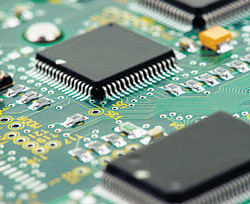In a finding that may lead to development of better-performing laptops, iPods or cellphones in future, material scientists have found a novel way to remove the heat generated in those devices by too many chips being packed in them to make them run faster and perform better.

The scientists’ finding has the potential to create “wonders for the electronics world” if researchers can successfully upgrade their project to the industrial scale.
The electronics industry follows the empirical Moore’s Law, which suggests processing speed of computer doubles in every 18 months. In every one and a half years, engineers find out ways to pack larger number of integrated-circuits (IC) onto a single chip to enable computers process more and more data efficiently.
As processing speed increases, removal of heat – generated by all these processors – from computers becomes an acute problem. If kept in the system, the heat will damage the machine.
At the moment, heat is drained out by a small fan. But this low-cost option would not work beyond a point if the number of ICs on a chip become too many. This is where the new discovery would come handy. Exploiting graphene – the thinnest material known to science – the scientists have found a unique way to drain away the excess heat from computers.
“If the packing density of chips increases substantially, conventional cooling systems used on chips such as fans or heat spreaders cannot handle this heat. The solution could lie in heat pipes to efficiently dissipate heat from the chip. Our technology could significantly improve the performance of such heat pipes for computer and other applications,” team member Nikhil Koratkar, a professor at Rensselaer Polytechnic Institute, told Deccan Herald. The findings were published in “Nature Materials” on January 22.
The researchers utilised a nano-material called graphene, which is an one atom-thick sheet of carbon packed like a honey-comb. Because of its many interesting properties, graphene is one of the hottest areas of research and being used extensively in nanotechnology. Koratkar, Pulickel Ajayan from Rice University and their colleagues successfully created those nano heat-pipes by coating copper, gold and silicon with graphene. “This is more useful for laptops, cellphones and iPod where lots of data is stored in a small space,” said Koratkar.
Novel method
* Every 18 months, engineers try to pack in a large number of integrated-circuits onto a single chip for more efficient data processing
* As processing speed increases, removal of heat from computers becomes a problem as the machine may get damaged
* Nano-heat pipes found to dissipate heat efficiently
* Team comprising four Indians and two Iranians and Chinese each have made nano-heat pipes by coating graphene, the thinnest material known to science, onto silicon, copper and gold
